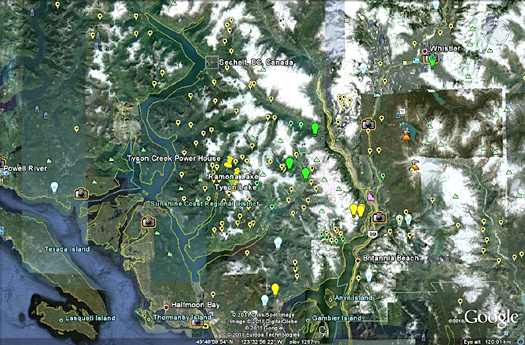The greater Sunshine Coast region is the focal point of a large number of Independent Power Projects (IPPs); over 180 have been proposed or approved. We believe these projects are being undertaken in an environmentally reckless manner.

We are concerned about independent power projects in general and specifically the Stl'ixwim project for the following reasons:
- There is no strategic higher level land use plan for the greater Sunshine Coast region. Consequently there is no process for assessing the land base needs of the various economic sectors or public and private stakeholders. This level of planning should take place before IPPs are proposed.
- Regional government is specifically denied any statutory role in the IPP approval process. This is the level of government that most closely understands the environmental, social and economic needs of the community and the region.
- The needs of species-at-risk have not been accounted for in the SC Forest District. For example; the Province has so far refused to accept the recommendations of the federal Marbled Murrelet Recovery Team. Also, the Province has left Mountain Goat winter ranges undesignated in the SC Forest District for over 10 years. There are potential impacts to these and many other species-at-risk.
- IPP proponents are not obligated to respect Landscape Unit Plans, Old Growth Management Areas, Wildlife Habitat Areas, or other environmental features.
- The IPP approval process does not consider or limit the cumulative impact of numerous proposed or existing IPPs, neither does it consider the cumulative impacts of other resource uses (such as forestry) on the potentially affected watersheds.
- The Stlixwim project is large enough to qualify for a provincial environmental assessment. However, this process is scientifically superficial. For example; the proposed time frame for the assessment is eight months; not enough time to even establish or verify flow regimes for the 19 tributaries that will be diverted.
- The publics most significant environmental asset in the Tzoonie watershed is the large (and potentially much larger) fish population. An 8-month impact assessment time frame is entirely insufficient to determine long term impacts to the fish populations. For example; how will all these dams, diversions, spoilage areas and transmission corridors affect water temperatures and nutrient cycles with in the Tzoonies ecosystems?
In principle, the SCCA is not opposed to small, potentially green hydroelectric projects. However, in the absence of comprehensive land use planning, effective environmental impact assessment and effective regulatory enforcement, approval of independent power projects must be viewed as alarming and reckless.
For more information see our Position Paper on IPPs.
Also see "Recommendations for Responsible Clean Electricity Development in British Columbia," authored by the David Suzuki Foundation, the Pembina Institute, Watershed Watch Salmon Society and West Coast Environmental Law, and endorsed by 25 environmental organizations across BC.
More information and updates on IPPs can be found at Citizens for Public Power, Save Our Rivers, and Friends of Bute Inlet.
